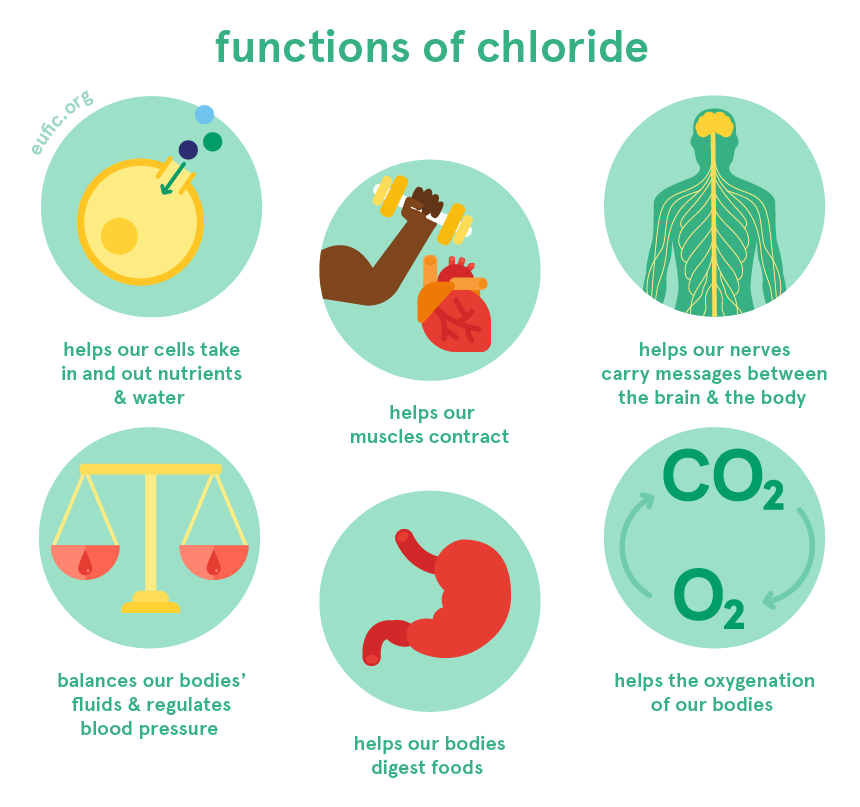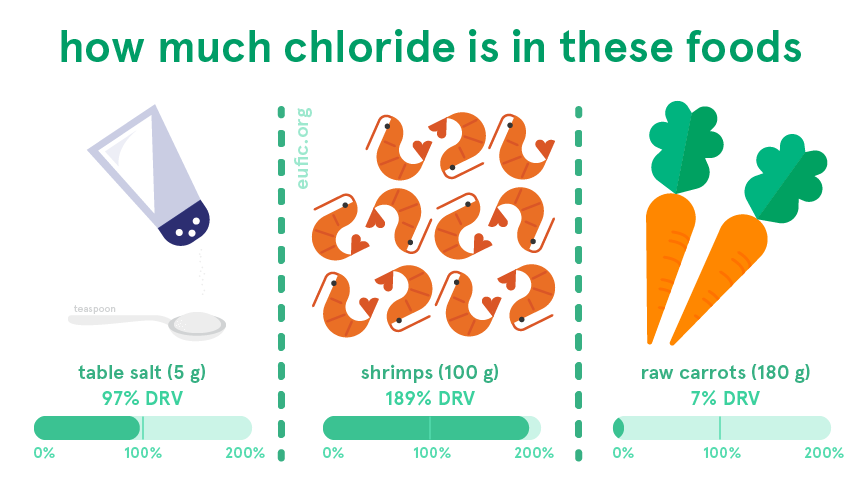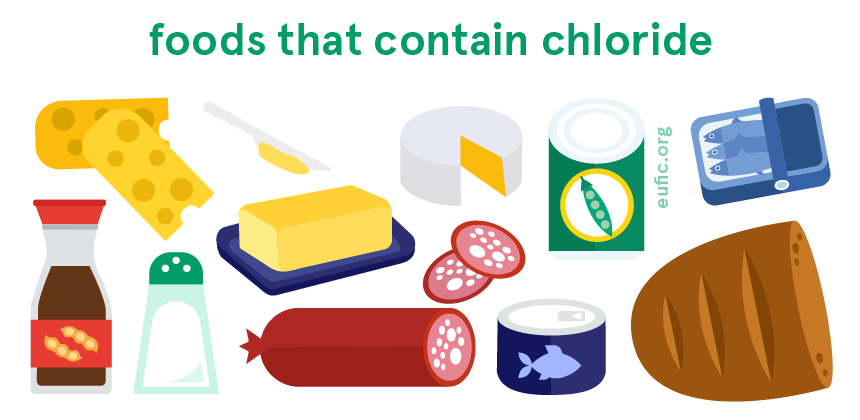Chloride is one of the major minerals, which our bodies need in relatively larger amounts to keep healthy.
What is chloride?
Chloride is an important electrolyte and one of the major minerals in the body. It makes up 0.15% of your total body weight. For an average adult, that adds up to around 115 grams.
Most of the chloride is found in your blood and other extracellular fluids. Only about 15% is inside cells.
The levels of chloride in your blood are tightly controlled by the kidneys. They increase or decrease chloride excretion levels to compensate for short-term fluctuations in your chloride intake.
Chloride’s Role in Fluid Balance
Chloride aids in fluid balance mainly because it follows sodium in order to maintain charge neutrality. Chloride channels also play a role in regulating fluid secretion, such as pancreatic juice into the small intestine and the flow of water into mucus. Fluid secretion and mucus are important for many of life’s processes. Their importance is exemplified in the signs and symptoms of the genetic disease, cystic fibrosis.
Hydrochloric acid (a gastric acid composed of chlorine and hydrogen) aids in digestion and also prevents the growth of unwanted microbes in the stomach. Immune-system cells require chloride, and red blood cells use chloride anions to remove carbon dioxide from the body.
What are the functions of chloride?
Chloride is involved in many of our bodily functions. Similar to sodium and potassium, chloride creates specific channels in the membranes of our cells which help to carry different vital tasks.
For example, chloride channels are key in controlling the amount of water and the type of compounds and nutrients that go in and out of cells. Overall, they play an important role in keeping the balance of our bodies’ fluids (thus, helping to regulate our blood pressure as well as the pH.
Chloride is also important to help the muscles and heart contract and to help our nerve cells carry messages (nerve impulses) between the brain and the body. More so, this mineral is needed to help red blood cells exchange oxygen and carbon dioxide in both the lungs (taking up oxygen and releasing carbon dioxide) and other parts of the body (delivering oxygen and taking up carbon dioxide).
Lastly, chloride also plays a role in the digestion of foods, by supporting the production and release of hydrochloric acid (HCl) in the stomach, without which foods could not be properly digested and absorbed.

How much chloride do I need per day?
How much chloride you need per day changes according to your age, sex and life-stage.
The dietary reference value (DRV)* for healthy adults (over the age of 18), including during pregnancy and lactation, is about 3 g of chloride per day.
Similar to sodium, the DRV for chloride is considered both safe and adequate, which means it’s enough to meet our bodies’ needs while preventing us from having a higher risk of health consequences linked to diets high in sodium chloride (salt), such as higher blood pressure and cardiovascular diseases.

* These values are based on the safe and adequate intake estimates from the European Food Safety Authority (EFSA). They should not be interpreted as nutrient goals. To know more about DRVs in Europe click here.
What foods contain chloride?
Chloride is naturally found in all unprocessed foods, although in very small amounts. For example, raw and unprocessed fish and meat can contain up to 4 mg of chloride per gram of food, while fruits and vegetables usually stay below 1 mg of chloride per gram of food.
Yet, it’s the chloride added to foods as table salt or through food additives (during cooking or food processing), that most contribute to our daily intake of this mineral, often in excessive amounts.
Some examples of foods high in chloride are shown in the image below and include:
- food sauces (such as soy sauce)
- processed meats (such as ham, bacon, sausages, etc.)
- cheese
- canned fish.
It’s important to keep in mind that these foods should be eaten in moderation and preferably in versions that have low (< 0.3 g of salt per 100 g of food) or no added salt. Plus, it’s important to pay attention to the amount of table salt that we add to foods when we’re cooking. Remember that a single teaspoon of table salt (5 g) is enough to meet our daily recommended amounts for chloride (and sodium).

Does chloride interact with other nutrients?
Chloride interacts with sodium and potassium to help regulate the volume of water in the body and to support the function of our muscle’ and nerve cells.
Having the right balance of these three minerals in our diets – particularly by making sure we eat enough potassium and keep our salt intake within the recommended values – is key to support a healthy blood pressure.
What happens if I have too much chloride?
The maximum recommended daily intake for chloride is 3.1 g, which is roughly equivalent to a teaspoon of table salt. However, it’s important to keep in mind that table salt is often added to many processed foods as well, making it easy for us to exceed the recommended amounts.
Regularly exceeding this recommendation puts us at risk of having high blood pressure, which in turn can lead to other health consequences, such as cardiovascular and/or kidney disease.
Post a Comment